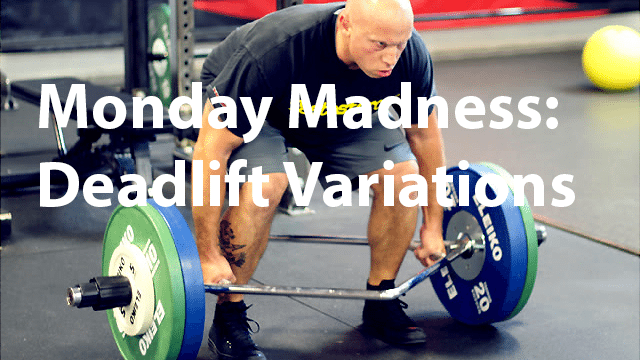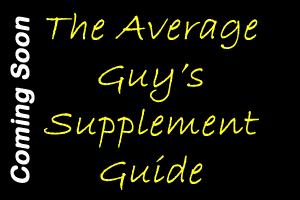
The deadlift is an amazing exercise. If you are not using them in your regular back or leg routines you should fix that immediately! Some would call it (and I agree) the King of Lifts.
Advantages of Deadlifts
There are so many advantages to deadlifts that it is difficult to find space to list them all. Here is a list of deadlift advantages:
- They burn calories and blast body fat
- They build forearms and increase grip strength
- They build total body strength
- They work many muscle groups in one simple movement: the calves, quads, hamstrings, butt, arms, core, lower/middle/upper back, traps, and shoulders
- They sculpt the entire core
- They increase the release of muscle building hormones.
Each of these advantages help build your body.
Deadlift Variations
There are many types of deadlifts. They are all wonderful to have in your repertoire.
Snatch Grip Deadlift
Snatch-grip deadlifts force you into a lower position which requires more work from the entire back, hamstrings, and glutes. Whenever the hamstrings are more involved in an exercise you're building major leg strength. If your hams are weak forget about being fast. If you want to get stronger – and everyone should be – then the snatch-grip deadlift is the solution.
It is an outstanding indicator exercise. Basically, whenever someone's snatch-grip deadlift goes up, so do their other deadlift variations and squats. Whenever you can significantly increase the strength in your hams, especially from a “stretched” position like with snatch-grip deadlifts, all of your leg exercises will blow up.
How to: Step up to the bar with feet about hip-width apart, just like you'd normally deadlift, but place your hands much further out on the bar. Basically, go as wide as you're comfortable going, but don't fret too much about it.
I'm 6'2″ and my index fingers are about an inch outside of the outer rings on the bar. You may have seen Olympic weightlifters gripping as wide as absolutely possible (for the snatch lift, hence the name of this exercise), but I feel this puts unneeded stress on the wrists and shoulders.
Because of the wider grip, you'll be in a starting position that's lower than you're used to, and it may feel a bit awkward. Don't panic, you'll get used to it quickly.
The snatch-grip deadlift is great for max effort strength-building work and for multiple sets of low reps. They should be done first in your workout. You don't want to do these with a pre-fatigued lower back! If your legs and back need a boost try this for three or four weeks, and then switch to another squat or deadlift variation.
Romanian Deadlift
The Romanian deadlift (RDL) may be one of the most underrated exercises in the iron game. They're misunderstood and often thought of as a “simple” accessory Olympic lift, but the people who've focused on them appreciate the power of the RDL.
For lifters with long torsos and fairly short legs, the RDL is far superior to other pulling movements when it comes to focusing on the glutes and hamstrings. While the straight-leg deadlift is often suggested for these areas, people with this body type end up putting most of the stress on the lower back, while the glutes and hams are mostly ignored.
Because the hams respond well to low reps and accentuated negatives, you can use the RDL as a main leg movement, but don't be afraid to use it as a supplementary exercise for moderate reps (in the 6-10 range).
I suggest rotating this movement into your routine for three weeks on, and then three weeks off. I don't normally recommend doing any one exercise so often, but this is a critical movement.
Straight-leg Deadlift
The straight-leg deadlift is an excellent variation for those who need to bring their lower backs and hamstrings up to par. While I feel that the Romanian deadlift is a more effective hamstring builder for most people, especially those with long torsos, the straight-leg deadlift is still a great exercise.
The name of the exercise is a bit confusing, however. You don't actually keep your legs locked “straight.” Keep a slight bend at the knees to prevent injuries. Stick to “traditional,” higher reps on straight-leg deadlifts, 3-4×8-12 done after your main leg movement for the day.
While RDLs can be used as a max effort, strength-building movement, I'd advise against using straight-leg deadlifts the same way. Keep them as an accessory lift in your leg training toolbox.
How to: Many people get confused by the difference between a straight-leg deadlift and a Romanian deadlift, however, there's one distinction that makes a world of difference. In the straight-leg deadlift, you perform a rep by bending over at the hips. With a Romanian deadlift, you push the hips back to produce the movement.
There are two standard options when it comes to increasing the range of motion (ROM) on both exercises. You can stand on a box or you can load the barbell with 25-pound plates instead of 45's. (You are deadlifting more than 135 pounds, right?)
Between the two, it's preferable to use 25's because this will increase ROM without altering form. When you're on a box, you may get distracted worrying about balance. You might have even seen people doing these while standing on a flat bench, but this is big-time overkill!
Pointers for Deadlifts
- Sit back! Don't just squat the weight up — let your hamstrings, glutes, and back do the work.
- Keep your shoulders behind the bar. This goes hand-in-hand with sitting back during the pull.
- Instead of thinking of “pulling the bar up,” use your hands as vices and picture pushing your feet through the floor. Whenever I see someone using their biceps during a deadlift (which is extremely dangerous), I know they're thinking of pulling.
- Think of yourself as a see-saw. Let your bodyweight “lean back” and take that weight off the bar.
Conclusion
Deadlifts should be the foundation of any successful leg program. However, it's easy to go overboard with them. Because the deadlift is especially tough on the central nervous system (CNS), you shouldn't do them every leg session. Either alternate between a squat movement and a deadlift every session or do two to three week cycles of each exercise.
If you decide to use some of these variations as supplementary instead of primary exercises to focus on the legs and butt, then you could use them more often as long as you keep the reps in the moderate range, to avoid CNS burnout.
